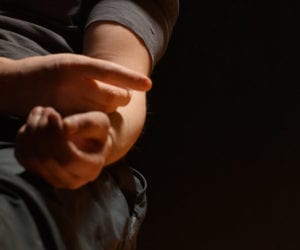How to Tell if Someone is Injecting Drugs

Intravenous Drug Use: How to Tell if Someone is Injecting Drugs
Injecting drugs directly into the blood stream causes a near instant affect, and this immediate reward is one of the reasons why intravenous (IV) drug users become so addicted. Many drugs can be injected into the body, but among the most abused in such a manner is heroin. According to the National Institute on Drug Abuse, there were 948,000 people who had used heroin in the past year in 2016. Injecting drugs fast tracks a person to addiction, and noticing the signs of abuse is crucial to being able to help another. In this article, we will examine how to tell if someone is injecting drugs.
Learn more about the signs of intravenous drug use. Click here!
The Signs of IV Drug Use
Even if a person is trying their best to hide their substance abuse, IV drug use has many tells that can be difficult to completely hide from other people. How to tell if someone is injecting drugs requires that you do some investigation and question the actions of your loved one, but in the end, it may save their life.
Some of the best ways on how to tell if someone is shooting up drugs is as follows.
Withdrawal Symptoms
One of the ways on how to tell if someone is injecting drugs that can’t be really be hidden are the withdrawal symptoms that set in after a few hours of the user not being able to get their fix. If heroin is what they are abusing, they may show flu-like symptoms. How to tell if someone is on heroin can be revealed by symptoms such as bone and muscle aches, sweating, nausea, abdominal pain, irritability, depression, anxiety, seizures, insomnia, and restlessness among others. Other drugs cause different withdrawal symptoms, but all these symptoms resemble a person being sick without having a virus or infection.
Changes in Their Personality
Another of the ways on how to tell if someone is shooting up drugs is an unexplained and often sudden change in their personality. Substance abuse becomes a fixation and priority in their life. This also means that other areas of their life such as their relationships and work suffer. They may lose interest in their hobbies and social activities altogether.
Track Marks
How to tell if someone is injecting drugs can be through noticing track marks. These are the points on their skin where the drugs are injected, and since there is frequent abuse of the drug, the marks aren’t given enough time to heal and may become infected. Common areas where drugs are injected include the inside of their elbow, back of the hand, wrist, behind the knee, and even between their toes.
Drug Paraphernalia
A person who injects drugs has to have various drug paraphernalia that they often reuse or leave lying around. While it may require you going through some of their things, it is necessary to help a person. Some of the paraphernalia that you’d expect to find includes used needles in the trash, cotton balls, burnt spoons or tin foil, a lighter when they don’t smoke, small plastic bags with powdery residue, and rubber tubing or missing shoelaces.
Appearance
A person’s appearance will change when there is drug abuse present. How to tell if someone is on heroin or other similar drugs can include their pupils become small or large, a runny nose, flushed skin, they may nod off, weight loss, sudden change in their emotions or behavior, and shallow breathing among others. Drug users often neglect their appearance, appearing dirty or unkept.
If you or a loved one needs help with abuse and/or treatment, please call the WhiteSands Treatment at (877) 855-3470. Our addiction specialists can assess your recovery needs and help you get the addiction treatment that provides the best chance for your long-term recovery.
